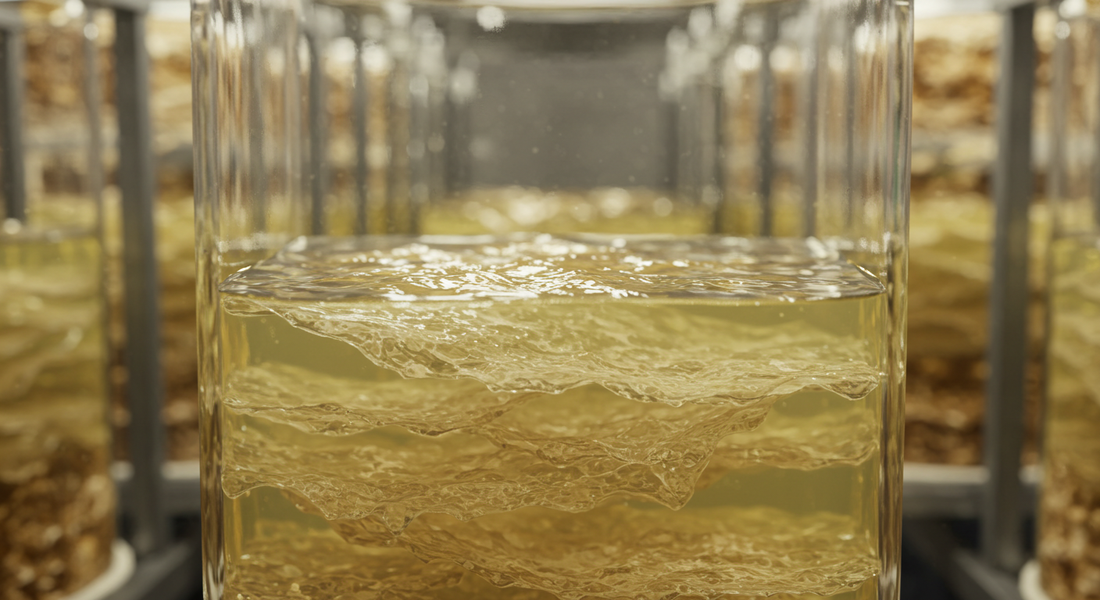
Mycelium Grain vs. Mycelium vs. Fruiting Body: The Truth About Medicinal Mushrooms
Share
People are hearing about medicinal mushrooms quite a bit recently. There are amazing, sometimes extraordinary reports of the benefits gained, and medicinal mushroom research has exploded, with numerous studies relating to almost every field of health and medicine currently happening.
But the personal reports are oddly mixed: some are vibrant with praise, awed by the effects and excited for the possibilities of the future with medicinal mushrooms. While others seem to experience some benefits, with which they are pleased, but they are certainly not astounded by the effects. This leaves many people wondering if the health benefits are real, and why there are such different experiences?
The reason for the difference is simple: Fruiting bodies vs mycelium grown on grain.
Medicinal mushroom products made from ‘grain cultivated mycelium’ or ‘myceliated grains’ or any other ‘mycelium grain culture’ are actually powdered grain with a bit of mycelium mixed in.
On average, a 5 pound bag of mycelium colonized grain will contain just 140 grams of mycelium.  That’s about 6 percent mycelium and 94 percent cereal grains. Grain culture mycelium supplements are not medicinal mushrooms, they’re hardly even mycelium!
That’s about 6 percent mycelium and 94 percent cereal grains. Grain culture mycelium supplements are not medicinal mushrooms, they’re hardly even mycelium!
Mycelium grain products are cultivated in a controlled indoor environment: Sterilized grain such as rye or oats is inoculated with mushroom spores and left to colonize for about 6 weeks.  Once the mycelium has grown throughout; the grain is dehydrated or flash frozen, powdered, packed and marketed as a mushroom supplement. These contain only a miniscule fraction of the beneficial compounds found in wild harvested mushroom fruit bodies.
Once the mycelium has grown throughout; the grain is dehydrated or flash frozen, powdered, packed and marketed as a mushroom supplement. These contain only a miniscule fraction of the beneficial compounds found in wild harvested mushroom fruit bodies.
Harvested mushrooms contain about 40% beta-D-glucans and less than 3% starch, while mycelium grain products typically contain 5% beta-D-glucans and 60% starch. Starch is abundant in cereal grains.
Compared to cultivated grain mycelium, mushroom fruit bodies contain staggeringly higher levels of beneficial compounds, between 30 and 80 times more! That difference is almost certainly caused by the ratio of actual mycelium compared to grain material of the tested samples.

Let me be redundant for a minute because this counts: Mushroom Mycelium has many wonderful benefits. Mushroom Fruit bodies have many wonderful benefits. Mycelium grain is mostly just plain grain, the meager benefits from grain cultured mycelium are only a faint hint of what mushrooms actually have for us.
For breakfast, grain is great. For medicinal purposes, a solid no.
Any mycelium intended for extraction should be cultured in liquid nutrient solution. This is the best method for many reasons, and allows for collecting only the mycelium, with zero filler material. When you find an apothecary using liquid cultured mycelium and fruit bodies for their medicinal tinctures, it’s a good bet they make something spectacular.

Mycelium and mushroom are distinct forms of a single species, each chemically and physiologically different from the other. Many of the complex compounds which provide such amazing benefits are found in the mushroom fruitbody, while others can be collected only from the mycelium. Intense research is currently exploring this area and we are eagerly awaiting each set of results.
But no research is needed for certainty that the grain which the mycelium was grown on contains absolutely zero of the beneficial compounds.
Mycelium grain based supplements are like a glimmer of candlelight, while real mushrooms are like brilliant noon sunshine!
